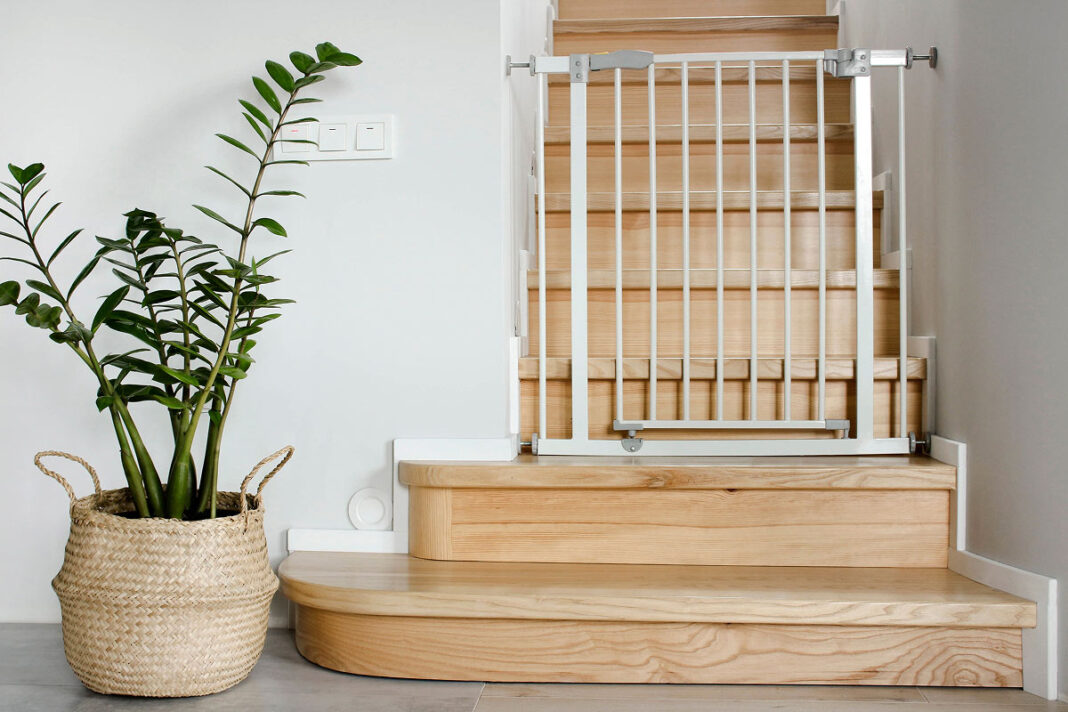Children are adorable but also curious by nature. While adults may see a sofa, a child may view it as a fort. Although building a fort can be entertaining, it’s important to remember that the lack of proper safety around the furniture can put children at risk, such as the danger of falls. This highlights the importance of learning different ways to childproof a home, even if it means altering a favorite corner of the house.
Read the Manuals
The items purchased for use with an infant can cause trouble if mishandled or not fully understood. A crucial home childproofing tip is to read the manuals for all types of gear. The booklet will help parents understand how to assemble the equipment and also how to identify if something isn’t aligned correctly. The manual for baby items will also list safety instructions, such as what to do if the gear malfunctions.
Install Gates by the Stairs
Gate installations are another aspect to tick off in the home baby-proofing checklist. Children are susceptible to crawling or walking around the home as they learn to do so. Since adult supervision may not be possible all the time, it’s best to keep them from tumbling down the stairs with gates at both ends of the steps. While plastic gates are one option, remember that the sturdier the material, such as metal, the better the safety. Moreover, the sturdiness of the gate should improve as a child gets older, so it’s better to install gates with quality materials right from the start.
Anchor Furniture to the Walls
Kids climb furniture in the house as they become more curious and start exploring. This makes it essential to focus on baby-proofing furniture, like anchoring furniture pieces to the wall. Anchoring will prevent the furniture from tipping over, enhancing overall home safety. Consider using wall anchors crafted from metal, as they are more durable and can hold heavier pieces.
Keep Fragile and Small Things Away
A home has several items that can be harmful to a child’s hands. So, an effective childproofing idea is to tuck these items away in childproof cabinets with safety latches and locks to prevent any untoward accidents. For instance, small toys, drawstrings for blinds, plastic bags, matches, and candles can be hazardous in a child’s hands.
Install Locks
Child safety locks should go on everything that could lead to mishaps. Lock all things that children can reach, as it can prevent them from accessing harmful items like laundry detergents and floor cleaners. Some lock options include those for cabinets and drawers that latch automatically when closed. Others include cabinet flex locks that attach to cabinet handles or knobs to keep the drawer or cabinet closed, while flexible tabs and triple-touch release offer additional protection. Furthermore, magnetic locks keep doors and drawers shut and require a key to open them.
Lock Windows
Open windows pose a fall risk for children. Ensure windows can’t be opened wide enough for the child to crawl through. Moreover, have mechanisms in place to opt for them from the top rather than the bottom. If the window is key-based, keep the key nearby. This will make it easy to open the window in an emergency. Also, keep furniture away from a window, as children may want to climb on it and crawl through. If a window is damaged or broken, have it repaired to keep the open space secured.
Secure Power Outlets
Electrical outlets at home are often left open, which can pose a risk. So, another child safety measure to follow at home is to block access to power outlets when they are dormant. Use flat plastic outlet covers that stick into an open outlet. Alternatively, purchase outlet covers that attach to the plate, they have a box-like design to cover the power outlet. Also, go cordless wherever possible or hide wires behind furniture with cord covers, as wires can also be a safety risk.
Designate “No-Go” Rooms for Unsafe Items
While children usually have access to all rooms at home, some spaces are best kept off-limits. However, it isn’t easy to baby-proof these spaces because of the numerous things inside, like a garage or a basement. Instead, designate them as “no-go” or “no-entry” rooms, directing kids to never enter them without adult supervision. Furthermore, use a high door lock to discourage children from trying to get in. See that the door is accessible by adults on both sides so no one gets locked in or out of a room accidentally.
Teach Kids about Hazards and Impart Safety Knowledge
If a child is old enough to understand things, start teaching them about potential hazards around the house and their risks. For instance, a pot or pan may resemble a toy, and a child may want to play with it. However, it is important to teach them to differentiate between toys and kitchen utensils. Demonstrate the use of utensils properly for meals by emphasizing safe grip and handling.
Check the Alarm Systems
There are many fire hazards to take lightly. Install smoke alarms on each level of the home or on every room, and outside sleeping areas. The alarm can sound and send out alerts in the event of a fire. Furthermore, check the systems once a month to ensure they are functional, and replace batteries yearly. CO alarms can be installed near sleeping areas to keep the home secure for kids, with batteries changed at least once a year.


